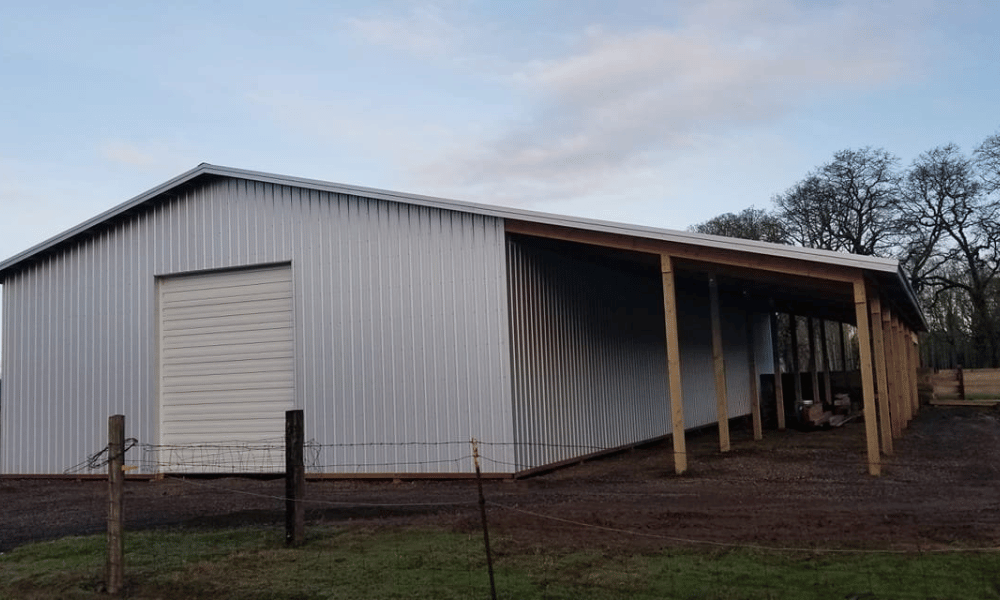Introduction
In recent years, the conversation around sustainable architecture has gained significant traction. The focus on eco-friendly buildings is not merely a trend; it’s a necessity for our planet's future. Among the myriad of components that contribute to the effectiveness and sustainability of these structures, ventilation stands out as crucial. Why is ventilation so important in eco-friendly buildings? Well, it can make or break the indoor environment, impacting everything from air quality to energy efficiency.
This article explores The Importance of Ventilation in Eco-Friendly Buildings comprehensively. We’ll delve into various aspects related to ventilation, highlighting its significance while reflecting on practical applications like pole barns and other structures. So, grab a cup of coffee and settle in as we navigate this essential topic!
Understanding Ventilation
What is Ventilation?
Ventilation refers to the process of exchanging stale indoor air with fresh outdoor air. This exchange helps regulate temperature and humidity levels while removing pollutants and odors. It’s an integral part of building design—especially in eco-friendly constructions where indoor air quality Click for source is prioritized.
Types of Ventilation Systems
- Natural Ventilation: Utilizes natural forces like wind and buoyancy. Mechanical Ventilation: Employs fans and duct systems to circulate air. Hybrid Systems: Combines both natural and mechanical methods.
The Role of Air Quality
Why Is Indoor Air Quality Important?
Did you know that indoor air can be more polluted than outdoor air? Poor indoor air quality can lead to health issues such as allergies, asthma, and other respiratory problems. In eco-friendly buildings, maintaining high air quality through effective ventilation systems is fundamental.
How Can Poor Air Quality Affect Health?
- Headaches Fatigue Irritation of eyes, nose, or throat Long-term respiratory diseases
Energy Efficiency Through Proper Ventilation
How Does Ventilation Impact Energy Consumption?
Proper ventilation can significantly reduce energy consumption. By ensuring that your building remains cool in summer and warm in winter without over-relying on HVAC systems, you can save money while minimizing your carbon footprint.
Passive Solar Design Benefits
Incorporating passive solar design principles further enhances energy efficiency by maximizing natural heating and cooling processes.
Ventilation Strategies for Eco-Friendly Buildings
Designing for Natural Ventilation
Optimizing window placement can allow for cross ventilation—a technique where cool outdoor air enters through one window while stale indoor air exits through another.
Utilizing Thermal Mass
Materials like concrete or stone retain heat during the day and release it at night. Pairing thermal mass with appropriate ventilation strategies creates a comfortable living space year-round.
Pole Barns: A Case Study in Effective Ventilation
What Are Pole Barns?
Pole barns are simple structures built using wooden poles set into the ground. Typically used for agricultural purposes, they are increasingly being adapted into homes or workshops due to their low cost and efficient design.
Why Choose Pole Barns for Eco-Friendly Living?
Pole barns allow for excellent airflow due to their open design—making them ideal candidates for effective ventilation strategies.
Humidity Control: A Critical Aspect of Ventilation
How Does Humidity Affect Indoor Spaces?
Excessive humidity can lead to mold growth, structural damage, and discomfort among occupants. Efficient ventilation helps balance humidity levels effectively.
Dehumidification Techniques
Using exhaust fans in areas prone to moisture—like kitchens and bathrooms—can help mitigate humidity issues without relying heavily on energy-intensive dehumidifiers.
Heat Recovery Ventilators (HRVs)
What Are HRVs?
Heat Recovery Ventilators are mechanical systems designed to improve indoor air quality while retaining heat energy from outgoing stale air.
Benefits of Using HRVs in Eco-Friendly Buildings
Enhanced Energy Efficiency Improved Indoor Air Quality Reduced Carbon FootprintBalancing Fresh Air Intake with Energy Costs
How Much Fresh Air Do You Need?
Striking a balance between adequate fresh air intake and energy costs is essential. Too much fresh air can lead to higher heating or cooling demands; too little can compromise health.
Calculating Fresh Air Requirements
Using guidelines from organizations like ASHRAE (American Society of Heating, Refrigerating and Air-Conditioning Engineers) aids in determining optimal fresh air intake levels according to occupancy rates.

Ventilation Controls: Smart Solutions
What Are Smart Controls?
Smart controls use sensors and automated systems to adjust ventilation based on real-time data regarding occupancy levels or CO2 concentrations.
Advantages of Smart Controls
- Increased energy savings Enhanced occupant comfort Better overall building performance
Regulatory Standards for Ventilation
Building Codes & Regulations
Most regions have specific building codes that govern ventilation standards—ensuring safety while promoting healthy living environments within eco-friendly buildings.
Importance of Compliance
Adhering to these codes not only ensures safety but also maximizes the effectiveness of your ventilatory systems—ultimately leading to better building performance.
Natural vs Mechanical: Which is Best?
What Are the Pros & Cons?
| Type | Pros | Cons | |--------------------------|---------------------------|----------------------------------| | Natural | Cost-effective | Weather-dependent | | Mechanical | Reliable year-round | Higher initial cost |
FAQs about The Importance of Ventilation in Eco-Friendly Buildings
Why is ventilation vital for eco-friendly buildings?- It ensures good indoor air quality by reducing pollutants while also enhancing energy efficiency.
- Excess humidity promotes mold growth; proper ventilation helps maintain balanced moisture levels.
- Yes! Their open design allows excellent airflow making them adaptable spaces.
- Exhaust fans, Heat Recovery Ventilators (HRV), and Energy Recovery Ventilators (ERV) are popular choices.
- Your choice will depend on your climate conditions, budget constraints, and specific needs.
- Absolutely! They allow customization based on real-time environmental factors improving both comfort and efficiency.
Conclusion
The importance of ventilation cannot be overstated when it comes to creating eco-friendly buildings that are not only sustainable but also offer high-quality living conditions. From enhancing indoor air quality to improving energy efficiency, effective ventilation strategies play a pivotal role in achieving these goals. Whether you’re considering traditional homes or more unconventional options like pole barns, understanding how best to implement these strategies will serve you well now—and well into the future.
As we continue striving toward greener constructions, remember that every decision counts—from materials used to methods employed—and effective ventilation will always be at the heart of sustainable architecture!